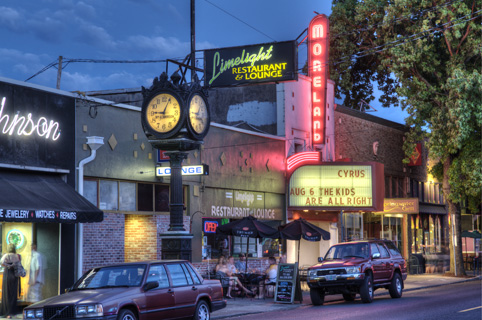 |
Portland's Reedway Street at the Union
Pacific railroad. Try crossing this! Actually,
don't. Image: author. |
Why did the chicken cross the road? You know the rest. But what if that road is a 16-lane freeway, or the busiest railroad in the state? Or, what if it is a natural “road” – a river, gulch, canyon, arroyo, cliff or hillside? To get to the other side, the chicken would need to somehow avoid dismemberment or drowning. More probable is that our feathered friend would stay on its side of the road, or take a circuitous route that increases the length and time of its trip by a large factor. As such, the chicken may be encouraged to get in its chicken car and drive two miles to a destination that is really just 200 feet away for a more flight-capable bird.
Transportation facilities – linear features intended to provide mobility – sometimes reduce it instead. Much has been written about mid-century freeways severing urban neighborhoods that, due to their disenfranchised minority populations and blighted housing stock, were deemed disposable. And most Americans have heard the expression that someone “grew up on the wrong side of the tracks.” While we have enjoyed the economic benefits of freeways and railroads, they came with a steep social price that we are still paying today.
Sometimes, if a community gets sufficiently annoyed about the gulf separating them from where they want to go, they organize and ask their leaders for a crossing. If they’re lucky, someone listens, finds a few million bucks, and gets it built.
This presents a series of policy questions. When is it worth spending millions to connect two sides of a freeway, railroad or river with a grade-separated crossing? What are the density thresholds or other criteria that make it worthwhile? How far apart should these crossings be spaced in urban, suburban and rural contexts? Should a new crossing be just for people on foot or bike, or should it be a complete street, or even a new interchange? How about just peds, bikes and emergency vehicles? Conversely, when is it okay to say, “No, you people don’t need to get from point A to point B in any sort of direct fashion”?
The answer is usually, “It depends.” But that’s not very helpful. Short of a doctoral thesis project, we can at least take an anecdotal look at how transportation planners have responded to these questions in practice.



